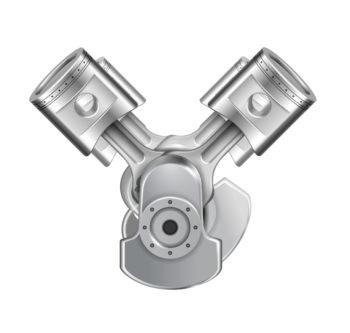How often do pickup truck owners, including ourselves, consider the DPF process? It directly impacts the engine management system and necessitates attention. To comprehend this system, let’s define DPF and explore its maintenance in this concise review. We are also going to discuss the benefits of tuning the engine.
It’s time for a review. Let’s get started!
DPF – what does this acronym stand for?
DPF stands for Diesel Particulate Filter, a device that traps particulate pollutants in the exhaust during its development, preventing their release into the air. This plays a crucial role in reducing pollution, particularly in urban areas with high diesel vehicle exposure. Meeting CO2 emission standards and regulations is the goal, which applies not only to our country but also to others. Compliance with such standards and regulations is mandatory for every modern vehicle.

Now that we have grasped the concept, let’s move on to the next intriguing aspect, namely DPF regeneration. As the particulate filter traps and prevents the dispersion of solid particles, it gradually becomes clogged like any other filter. Thus, timely DPF regeneration is necessary. During this process, accumulated soot is burned off at high temperatures. The result? Reduction in harmful pollutant emissions and a decrease in black smoke.
However, things are not always as simple as we might hope. Each car has its own peculiarities, and achieving the required high temperatures for regeneration may not be easy. We cannot simply increase the temperature at will. If your car fails to reach the necessary temperatures, regeneration will not occur, potentially leading to breakdowns or even complete malfunction. It’s an unfortunate reality.
There’s another aspect to consider. Many owners frequently work on their cars, leading to faster resource depletion. Consequently, more frequent servicing and vigilant monitoring become essential. Failure to adhere to these guidelines significantly increases DPF clogging, potentially resulting in costly breakdowns. To avoid such problems on the road or elsewhere, DPF removal becomes a lifesaving option.
As you rightly guessed, in such cases, owners opt for disabling or physically removing the DPF, or through engine customization via the control system.
5 Benefits of Top-notch DPF Off:

1. Enhanced overall performance: DPF removal significantly improves performance, resulting in improved handling and smoother acceleration.
2. Increased fuel economy: With DPF removal, you’ll consume less fuel, allowing for longer drives.
3. Extended engine life: Taking advantage of DPF removal leads to a longer-lasting engine, reducing maintenance requirements and saving you money. Treat yourself with the extra savings.
4. Legal compliance and versatility: Physically removing the DPF is prohibited by European law, except for off-road vehicles. However, modifying the engine management system to remove the DPF is not illegal, providing peace of mind.
Considering the balance:
Investing in ourselves also applies to our cars. Modifying your engine through DPF removal or hardware is a sensible long-term decision.
To make it happen, if you’re unsure how, we, as providers of DPF removal products and services, are here to assist you promptly. With our extensive range and experienced engineers, we offer precise engine tune-ups, shipping, and meticulous attention to detail. Our manager will gladly provide advice and find the best solution for you.
Our DPF removal services encompass DPF flow adjustments, smoke correction maps, engine control system reprogramming, and other improvements to the engine control system.
Impressive results await you at dpfdelete.com.

